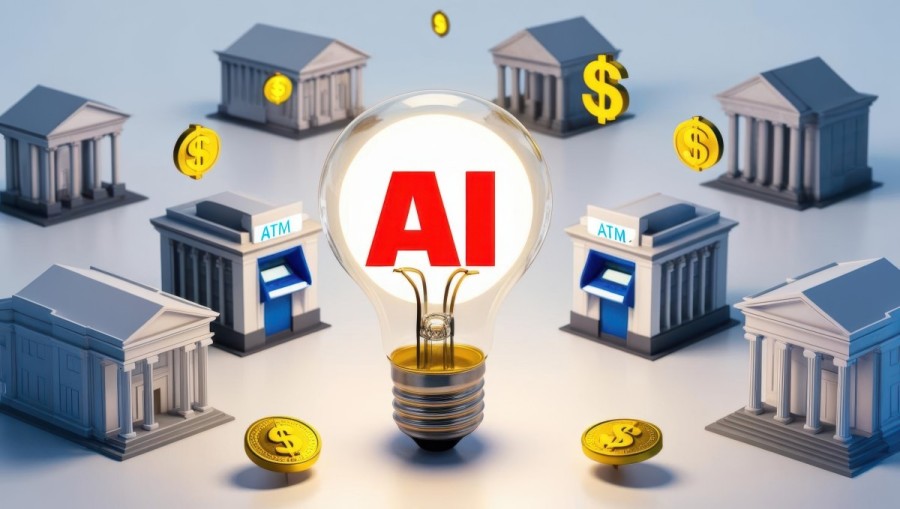Bates Research | 02-03-25
5 Ways AI is Transforming Financial Institutions

Artificial Intelligence (AI) is revolutionizing the financial services industry, reshaping how institutions operate, interact with customers, and manage risk. As AI technologies continue to evolve, financial institutions are leveraging them to enhance efficiency, improve security, and maintain compliance with complex regulations. From automating routine tasks to optimizing investment strategies, AI is driving innovation across the industry. This article explores five key ways AI is transforming financial institutions, offering a glimpse into the future of finance and the opportunities it presents for firms looking to stay ahead in a rapidly changing landscape.
1. Automating Compliance and Regulatory Processes
Navigating regulatory requirements is a complex and resource-intensive task for financial institutions. AI-powered tools analyze large volumes of data to ensure compliance with laws and regulations, reducing the risk of errors and penalties. These systems can monitor transactions, flag potential violations, and even predict future compliance risks based on evolving regulations, saving institutions significant time and resources.
2. Enhancing Customer Service and Personalization
AI-driven chatbots and virtual assistants are transforming customer engagement by providing instant, personalized support. These tools use natural language processing (NLP) to answer queries, guide customers through processes, and offer tailored financial advice. This not only improves customer satisfaction but also allows institutions to cater to a wider audience without increasing operational costs.
3. Strengthening Fraud Detection and Cybersecurity
AI excels in identifying patterns and anomalies that human analysts might miss, making it a powerful tool for fraud detection and cybersecurity. By analyzing transaction data in real-time, AI can detect unusual activities indicative of fraud or breaches. Advanced machine learning algorithms adapt over time to identify emerging threats, helping institutions stay one step ahead of cybercriminals.
4. Optimizing Investment Strategies with Predictive Analytics
Financial institutions leverage AI to analyze market trends, economic indicators, and historical data to develop more accurate investment strategies. Predictive analytics powered by AI can forecast market fluctuations, assess portfolio risks, and uncover hidden investment opportunities. This capability is especially valuable in fast-paced trading environments, where speed and precision are critical.
5. Automating Routine Operations for Increased Efficiency
Repetitive tasks like data entry, document verification, and transaction processing can be automated with AI, significantly reducing the workload on employees. Robotic process automation (RPA), combined with AI, ensures these tasks are completed quickly and with minimal errors. This allows human resources to focus on higher-value tasks such as strategic decision-making and customer relationship management.
The integration of AI into financial institutions is not just a trend—it's a transformative shift that is redefining how businesses operate. While AI-driven solutions offer significant benefits such as enhanced compliance, improved security, streamlined operations, and better customer engagement, they also introduce new risks, including algorithmic bias, regulatory challenges, and cybersecurity threats. As we have previously written, to navigate these complexities, financial institutions must implement AI responsibly and proactively address potential risks.
How Bates Group Helps:
Bates Group provides expert guidance and tailored solutions to help organizations mitigate AI-related risks, ensure regulatory compliance, and optimize AI strategies for long-term success. As the financial landscape evolves, institutions that effectively leverage AI while managing its risks will position themselves as industry leaders in innovation and efficiency. Contact us today to start your solution.